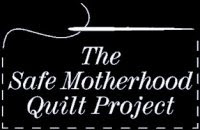 What is a doula, and why do I need one?
What is a doula, and why do I need one?A doula is a trained and experienced professional who provides continuous physical, emotional and informational support to the mother before, during and just after birth; or who provides emotional and practical support during the postpartum period. Studies have shown that when doulas attend birth, labors are shorter with fewer complications, babies are healthier and they breastfeed more easily.
A birth doula certified by DONA International is designated by the initials CD(DONA). A postpartum doula certified by DONA International is designated by the initials PCD(DONA).
A Birth Doula:
- Understands the physiology of birth and the emotional needs of a woman in labor
- Assists the woman in preparing for and carrying out her plans for birth
- Stays with the woman throughout the labor
- Provides emotional support, physical comfort measures and an objective viewpoint, as well as helping the woman get the information she needs to make informed decisions
- Facilitates communication between the laboring woman, her partner and her clinical care providers
- Perceives her role as nurturing and protecting the woman's memory of the birth experience
- Allows the woman's partner to participate at his/her comfort level
- Offers education, companionship and nonjudgmental support during the postpartum fourth trimester
- Assists with newborn care, family adjustment, meal preparation and light household tidying
- Offers evidence-based information on infant feeding, emotional and physical recovery from birth, infant soothing and coping skills for new parents and makes appropriate referrals when necessary
Visit msnbc.com for Breaking News, World News, and News about the Economy
What should I look for when hiring a doula?
The Coalition for Improving Maternity Services has issued Mother-Friendly Guidelines for Doula Services. This list will provide you with ten questions to ask your potential doula, ensuring that your concerns are addressed from the beginning of your relationship.
Who are the doulas practicing in our community?
Leah Brown, CD (DONA)
Christina Holmes, CD (DONA)
Allison Ingram
Cheryl Kindred
Jennifer Lamora, CD (DONA)
Laura Meyer, AAHCC
Jaimee Miller
Christine O'Dell
Tiffany Patterson, Certified Massage Doula
Nicky Quick, CD (DONA)
Holly Riley, CD (ALACE) (taking clients due through July)
Erica Shane
Spring (Rose) Smith PCD (DONA)
Patti Treubert CD (DONA)
Kati Trese, awaiting DONA certification
Chantal Wilford
How can I become a certified Birth Doula?
DONA International Birth Doula Training
June 20th-21st, 2009
Birthways Family Birth Center
4222 McIntosh Lane
Sarasota, Florida 34232
For more information or to register please call:
Patti Treubert, CD (DONA)
Leah Brown, CD (DONA)
Christina Holmes, CD (DONA)
Allison Ingram
Cheryl Kindred
Jennifer Lamora, CD (DONA)
Laura Meyer, AAHCC
Jaimee Miller
Christine O'Dell
Tiffany Patterson, Certified Massage Doula
Nicky Quick, CD (DONA)
Holly Riley, CD (ALACE) (taking clients due through July)
Erica Shane
Spring (Rose) Smith PCD (DONA)
Patti Treubert CD (DONA)
Kati Trese, awaiting DONA certification
Chantal Wilford
How can I become a certified Birth Doula?
DONA International Birth Doula Training
June 20th-21st, 2009
Birthways Family Birth Center
4222 McIntosh Lane
Sarasota, Florida 34232
For more information or to register please call:
Patti Treubert, CD (DONA)
941.780.0990

































